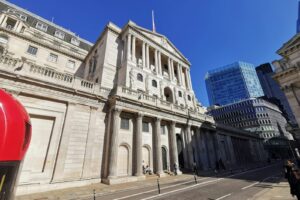IFAM: How has the asset class fared through the market’s ups and downs recently? Does it offer any particular characteristics that may appeal to investors?
AA: Listed infrastructure’s outperformance during turbulent times is not just a reflection of market sentiment which can be fickle; the resilience of the asset class is justified by solid fundamentals and the operating performance of individual companies. There is empirical evidence to demonstrate the resilience of these business models, arising from the critical nature of underlying assets. History shows that the cashflows (illustrated in fig 1 by EBITDA) generated by listed infrastructure businesses and the dividends paid from them remained relatively stable during the financial crisis before resuming their upward trajectory.

Over the last few years we’ve done some work breaking down the market’s returns into various episodes and looked at how the strategy has performed and why – and where the performance has come from – in each of those episodes. Broadly speaking, what we found was that when the wider equity market finds itself in a difficult period – for example in Q4 of 2018 or more recently the month of August this year – these are the environments where this asset class really shines. In the case of August, we saw the strategy increase capital whilst the overall market was down. Of course, that was only one month but it is an indicator that this asset class at the very least provides downside protection and preserves capital which is a great starting point for when markets start to recover. When this happens we aren’t left behind, we are able to participate as we are invested in businesses which have underlying growth characteristics and can grow their income streams. There are certain types of markets – what I call the ‘go-go markets’ – when there is much excitement in sectors such as technology which people get drawn to. We won’t necessarily keep up in these times, with those of course, but we can still participate in the upside. Over the long term, these characteristics of downside protection along with strong growth prospects on the upside, allows the strategy the potential to outperform and with lower volatility than the broader market.
In both scenarios, we’ve found that the contribution comes from different places at different times within the portfolio. This really emphasises the importance of diversification across the various categories in which we invest and helps us to offer a more robust solution for investors.
Finally, we’re excited by the increasing interest we’re seeing from our clients. The strategy’s assets overall are already well over £200m, having started from a very low base. I’m pleased to say that I was the first private investor in the fund because I want to be completely aligned with our investors in delivering on our objectives. I also want to enjoy the prospects for growth and rising income to help me to deliver on my own objectives for the future.
About Alex Araujo

Alex Araujo has been the manager of the M&G Global Listed Infrastructure Fund since it launched in October 2017, and was appointed manager of the M&G Global Themes Fund in January 2019. Alex initially joined M&G’s income team in July 2015 and became co-deputy manager of the M&G Global Dividend Fund in April 2016. Alex has 25 years of experience in financial markets. He graduated from the University of Toronto with an MA in economics and is a CFA charterholder.
Find out more about M&G Investments here












